Crunchy Curiosity: Can Cats Eat Romaine Lettuce? A Vet-Reviewed Safety Guide
- 12 Apr 2025 15:44
Cats, with their inquisitive natures, often show interest in the foods their humans eat. The crisp texture and bright green leaves of romaine lettuce might catch your feline friend's eye as you prepare a salad, leading to the inevitable question: can cats eat romaine lettuce? While we associate lettuce with health for ourselves, translating human dietary rules to our obligate carnivore companions requires careful consideration. Is this leafy green a safe snack, a source of hydration, or something best left off their menu?
The short answer is that romaine lettuce is generally considered non-toxic to cats, but its suitability as a treat or dietary addition is limited and comes with caveats. Unlike essential meat-based nutrition, lettuce offers minimal benefits relevant to a cat's core needs and can even pose minor risks if not handled correctly. This comprehensive guide, adhering to E-E-A-T standards (Experience, Expertise, Authoritativeness, Trustworthiness) and reviewed for veterinary accuracy, will explore the safety profile, potential minor benefits, risks, and proper way to offer romaine lettuce to your cat, ensuring you prioritize their unique physiological requirements.
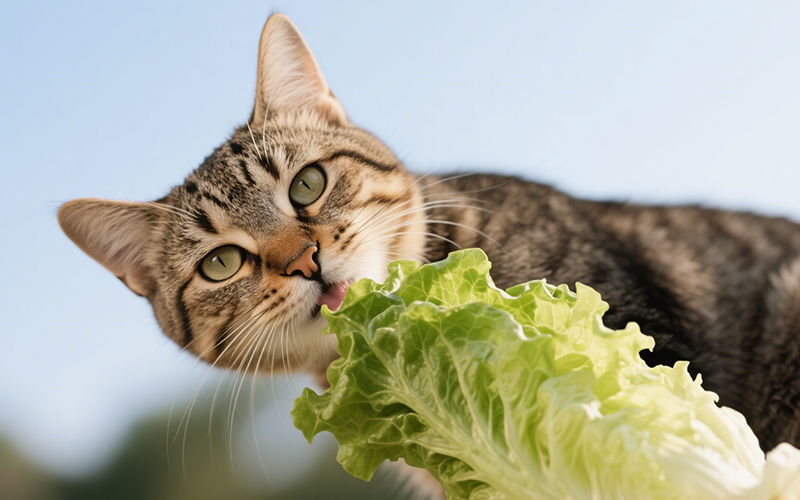
What is Romaine Lettuce? A Brief Look at the Greens
Romaine lettuce (*Lactuca sativa var. longifolia*) is a popular variety of lettuce known for its sturdy, elongated leaves with a firm rib down the center. Compared to iceberg lettuce, it's generally considered more nutritious for humans. Key components include:
High Water Content: Typically over 90-95% water.
Dietary Fiber: Provides roughage.
Vitamins: Contains Vitamin K (important for blood clotting) and Vitamin A (primarily as beta-carotene). It also has some folate (Vitamin B9).
Minerals: Offers small amounts of potassium and other minerals.
Low Calorie: Very low in calories, fat, and protein.
While these features make it a healthy choice for humans seeking hydration and certain vitamins, its value proposition changes significantly when viewed through the lens of feline nutrition.
Feline Nutrition Basics: Why Cats Need Meat, Not Salad
Understanding why lettuce isn't a dietary staple for cats requires revisiting their fundamental biology as **obligate carnivores**. This defines their nutritional needs entirely:
Meat is Non-Negotiable: Cats evolved to obtain all essential nutrients from consuming animal prey. Their digestive systems are optimized for processing animal protein and fat.
High Protein Demand: They require significantly more protein than omnivores, and it must be high-quality animal protein to provide essential amino acids.
Specific Amino Acid Needs: Taurine, crucial for heart health, vision, and reproduction, is found abundantly in meat but is absent in plants like lettuce.
Vitamin A Requirement:** Cats need pre-formed Vitamin A (retinol), found in animal sources like liver. They are very inefficient at converting beta-carotene (the form in romaine lettuce) into usable Vitamin A.** Therefore, lettuce does not contribute meaningfully to their Vitamin A needs.
Fat for Energy: Animal fats provide essential fatty acids (like arachidonic acid) and are a primary energy source.
Limited Carb Processing: Their bodies have minimal need for carbohydrates and lack efficient mechanisms to digest large amounts of plant fiber or starches.
This biological blueprint clearly indicates that leafy greens like romaine lettuce are nutritionally peripheral, at best, for a cat's diet.
The Direct Answer: Is Romaine Lettuce Safe for Cats?
Yes, romaine lettuce is generally considered **non-toxic** to cats. Unlike some plants (e.g., lilies, onions, garlic) that contain specific toxins dangerous to felines, romaine lettuce itself doesn't harbor acutely poisonous compounds in typical serving sizes.
However, "non-toxic" does not automatically equate to "good for them" or "completely risk-free." Key considerations include:
Minimal Nutritional Value:** It offers very little that a cat actually needs.
Potential for Digestive Upset:** The fiber can cause issues for some cats.
Preparation Matters:** Must be plain and thoroughly washed.
Treat, Not Meal:** Should only ever be considered an occasional, tiny treat, not a dietary staple.
So, while accidental ingestion of a small piece is unlikely to cause serious harm regarding toxicity, intentionally feeding it requires understanding the limited benefits and potential downsides.
Potential (Minor) Benefits of Romaine Lettuce for Cats
While not a nutritional powerhouse for felines, romaine lettuce might offer a couple of minor, fringe benefits if offered correctly:
1. Hydration Boost (Minor)
With its very high water content (around 95%), a small piece of romaine lettuce can contribute a tiny amount to a cat's overall hydration. This might be slightly appealing for cats who don't drink much water. However, it's not a substitute for providing ample fresh water daily or feeding high-moisture wet food, which are far more effective hydration strategies.
2. Fiber Source (Potential Double-Edged Sword)
Lettuce contains dietary fiber. In very small amounts, this *might* theoretically aid digestion or help move hairballs along in some cats. However, feline digestive tracts aren't designed for large amounts of plant fiber, and too much can easily lead to digestive upset (see risks below). Specific veterinary fiber supplements are a more controlled and effective option if fiber is genuinely needed.
3. Low-Calorie Treat Option
For cats needing treat motivation but struggling with weight, a tiny piece of lettuce offers a very low-calorie alternative to traditional high-fat or high-carb treats. It provides crunch and novelty without significantly impacting their calorie intake.
4. Enrichment / Play
Some cats enjoy the crunchy texture or might find batting a piece of lettuce around enriching. However, allowing them to ingest more than a tiny bite carries risks. Safer toys offer better enrichment.
It's crucial to keep these potential benefits in perspective: they are minimal and often better achieved through other, more species-appropriate means.
Risks and Concerns: Why Caution is Needed with Lettuce
Despite being non-toxic, offering romaine lettuce isn't entirely without potential downsides:
1. Digestive Upset (Most Common Risk)
Cats' digestive systems aren't built to process significant amounts of plant fiber.
Indigestible Fiber:** The cellulose in lettuce can be difficult for cats to break down.
Symptoms:** Ingesting more than a tiny amount can lead to gas, bloating, abdominal discomfort, vomiting, or, more commonly, diarrhea.
2. Lack of Nutritional Value
This is a fundamental issue. Lettuce offers virtually none of the essential nutrients cats require from their diet (animal protein, essential fatty acids, taurine, usable Vitamin A).
Empty Calories:** While low-calorie, the calories it does provide are essentially "empty" for a cat.
Dietary Displacement:** Filling up on lettuce could potentially reduce their intake of their necessary, balanced cat food, leading to nutritional gaps if done frequently or in large amounts.
3. Pesticide Residue
Conventionally grown lettuce can carry residues of pesticides, herbicides, and fungicides on its surface.
Risk:** These chemicals can be harmful if ingested by cats.
Mitigation:** **Thorough washing** of lettuce leaves under running water is absolutely essential before offering even a tiny piece to mitigate this risk. Opting for organic lettuce reduces chemical exposure but washing is still recommended.
4. Potential for Bacterial Contamination
Leafy greens, including romaine lettuce, have occasionally been implicated in foodborne illness outbreaks (like *E. coli* or *Listeria*) in humans due to contamination during growing, harvesting, or processing.
Risk to Cats:** While perhaps less susceptible than humans to some strains, cats can still potentially be affected by these bacteria.
Risk to Humans (Zoonotic):** If the lettuce is contaminated and the cat eats it, there's a theoretical (though likely low) risk of the cat shedding bacteria and posing a risk to humans.
Mitigation:** Thorough washing helps reduce surface bacteria. Sourcing fresh lettuce and storing it properly is also important. Avoid feeding lettuce that is wilted, slimy, or part of a known recall.
5. Choking Hazard (Minor Risk)
While much softer than raw carrots, large pieces of the thicker rib of a romaine leaf *could* potentially pose a minor choking risk if a cat tries to swallow it whole without chewing properly. Offering only small, manageable pieces minimizes this.
6. Not a Substitute for Cat Grass
Some cats seem drawn to eating grass (often cat grass like oat or wheat grass). While the exact reason isn't fully understood (may involve aiding digestion, purging indigestible matter, or providing trace nutrients like folic acid), lettuce is not a direct nutritional or functional substitute for specific cat grasses.
How to Safely Offer Romaine Lettuce (If You Choose To)
If, after understanding the minimal benefits and potential risks, you decide to offer a tiny taste of romaine lettuce as an occasional treat, follow these steps rigorously:
1. Select Fresh Lettuce: Choose crisp, fresh romaine lettuce. Avoid any leaves that are wilted, slimy, discolored, or damaged.
2. Wash Thoroughly: This is the most critical step. Wash the individual leaves under cold running water, rubbing gently to remove dirt, potential pesticide residues, and surface bacteria. Pat dry. Organic lettuce should still be washed.
3. Offer Small Pieces ONLY: Tear off a small piece of the leaf (avoiding the thickest part of the rib initially). Offer a piece no larger than a postage stamp or your thumbnail.
4. PLAIN Lettuce Only: Absolutely NO dressings, oils, salt, pepper, cheese, croutons, onions, garlic, or any other toppings or seasonings. Many salad ingredients are toxic or harmful to cats.
5. Supervise: Watch your cat while they eat it to ensure they chew it and don't have difficulty.
6. Moderation is Key: Offer only a tiny amount.
7. Frequency: Very Occasional:** This should be a rare treat, perhaps once a week or less often, not a daily snack.
8. Monitor for Reactions: After offering it for the first time, watch your cat for the next 24-48 hours for any signs of digestive upset (vomiting, diarrhea, excessive gas). If any occur, discontinue offering lettuce. Strict adherence to these steps, especially thorough washing and tiny portion sizes, is essential if you decide to let your cat try **romaine lettuce**. If your cat shows interest in greens or you want to offer healthy treats, consider these safer and more appropriate options: Cat Grass:** Specifically grown oat, wheat, barley, or rye grass is safe for cats to nibble, provides fiber, and satisfies their instinct to eat greens. Small Pieces of Cooked Meat/Fish:** Plain, unseasoned, cooked chicken, turkey, lean beef, lamb, or fish (boneless). Commercial Cat Treats:** High-quality, meat-based treats designed for feline needs. Freeze-Dried Meat Treats:** Single-ingredient protein treats. Certain Cooked Vegetables (Tiny Amounts, Plain):** While not necessary, tiny amounts of thoroughly cooked and mashed vegetables like pumpkin (can aid digestion), peas, or *cooked* carrots (safer than raw) might be tolerated by some cats as an infrequent addition, but always check safety first and introduce cautiously. Lettuce is generally less suitable than these due to the risk/benefit ratio. Veterinarians generally advise the following regarding cats and romaine lettuce: It is **non-toxic** but offers negligible nutritional value for obligate carnivores. The primary benefit might be minor hydration or enrichment for some cats. The main risks are **gastrointestinal upset** (diarrhea, gas) due to indigestible fiber and potential exposure to **pesticides or bacteria** if not washed properly. It should only be offered in **tiny amounts, very occasionally**, and always **plain and thoroughly washed**. It is **not a substitute for cat grass** or essential nutrients found in a balanced diet. Safer, more species-appropriate treats and greens (like cat grass) are generally preferred. The consensus is that while not inherently dangerous in tiny, clean amounts, romaine lettuce isn't a necessary or particularly beneficial part of a cat's diet. Navigating the world of feline nutrition and determining which human foods are safe, like whether romaine lettuce is okay for cats, can sometimes be confusing. If your cat experiences digestive upset after trying a new food, or if you have quick questions about food safety, having accessible information is helpful while you consult your veterinarian. The PettureX App provides modern tools for pet parents: 24/7 AI Vet Consultation: Get immediate AI-powered answers to questions about specific foods, potential toxicity, or symptoms like vomiting or diarrhea, helping you assess the situation anytime. Image Recognition: Useful for identifying your pet's breed or getting preliminary insights into visible health concerns like skin conditions. AI-Powered Symptom Checker: Describe your cat's symptoms for an AI analysis of potential causes, aiding your understanding and communication with your vet. Comprehensive Pet Health Database: Quickly find information on feline nutrition, common health problems, and appropriate care practices. PettureX serves as a valuable digital resource, offering convenient AI-driven support and information as a complement to the essential, personalized care provided by your veterinarian. In conclusion, while romaine lettuce is not considered toxic to cats, the answer to "can cats eat romaine lettuce?" is that it's generally unnecessary and not recommended as a regular part of their diet. It offers minimal nutritional value relevant to their needs as obligate carnivores and poses potential risks, primarily digestive upset (diarrhea, gas) and exposure to pesticides or bacteria if not meticulously washed. If offered at all, it must be thoroughly washed, plain, and given only in tiny amounts as a very infrequent treat. Safer, more species-appropriate options like cat grass or small pieces of cooked meat provide better enrichment or nutritional benefits without the same risks. Prioritize your cat's health by feeding a complete and balanced commercial cat food and choosing treats that align with their carnivorous nature. When in doubt about any food item, consulting your veterinarian is always the safest course of action.Better Greens and Treats for Cats
Expert Veterinary Opinion on Romaine Lettuce for Cats
Summary Table: Cats Eating Romaine Lettuce
Aspect Safety Information & Recommendations for Cats Can Cats Eat Romaine Lettuce? Yes, generally non-toxic, but not recommended as a regular food item. Minimal benefits, potential risks. Nutritional Value for Cats Negligible. Low calorie, high water, some fiber. Lacks essential feline nutrients (protein, taurine, usable Vit A). Potential Minor Benefits Hydration boost (minor), fiber (can cause upset), low-calorie treat option, enrichment. Primary Risks **Digestive Upset** (Diarrhea, Gas, Vomiting), **Pesticide Residue** (if not washed), potential bacterial contamination. Other Risks Lack of nutrition, minor choking risk (thick ribs/large pieces). Safe Preparation **Wash thoroughly**, offer small pieces of leaf only, serve PLAIN (no dressing/seasoning). Portion Size Tiny amount only (e.g., postage stamp size). Treat, not meal substitute. Frequency Very occasional (once a week or less). Better Alternatives Cat grass, cooked meat treats, commercial cat treats. Quick Pet Health Questions? PettureX Offers AI Support!
Conclusion: Romaine Lettuce - A Non-Toxic but Unnecessary Snack for Cats
Related

Marshmallows and Cats: A Puffy Problem? Why Vets Say No to This Sugary Snack
- 22 Apr 2025
Kefir for Kitties? A Veterinarian-Reviewed Guide to Safety, Benefits & Risks
- 22 Apr 2025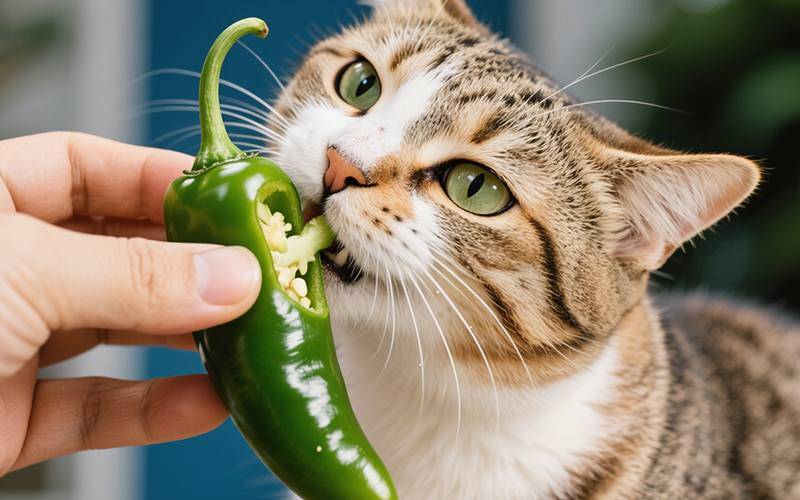
The Burning Question: Can Cats Eat Jalapenos? A Comprehensive Safety Guide
- 21 Apr 2025
Cool Temptation: Can Cats Eat Ice Cream Safely? The Vet-Backed Truth
- 21 Apr 2025
Frankly Dangerous: Can Cats Eat Hot Dogs? Vet Explains the Serious Risks
- 16 Apr 2025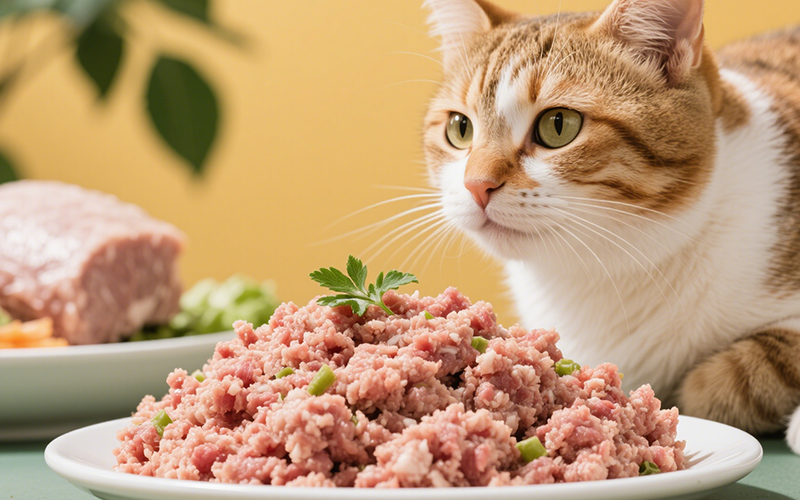
A Purrfect Protein? Can Cats Eat Ground Turkey Safely? (Vet-Reviewed Guide)
- 16 Apr 2025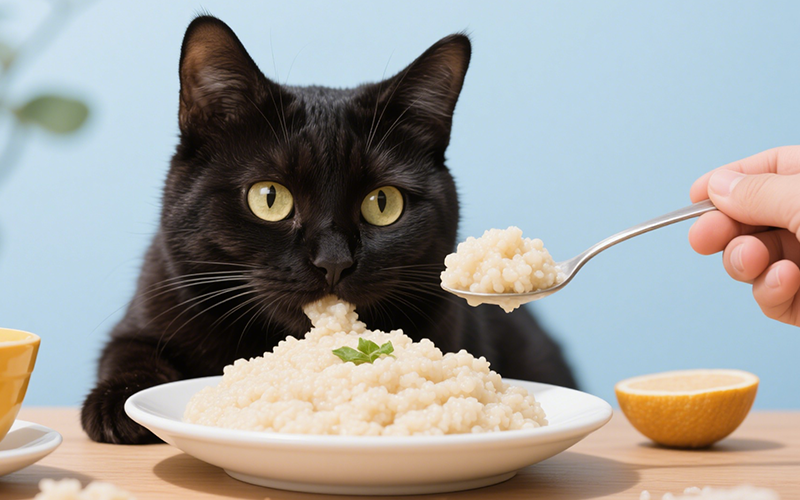
Gritty Situation: Can Cats Eat Grits Safely? Vet Explains the Risks
- 16 Apr 2025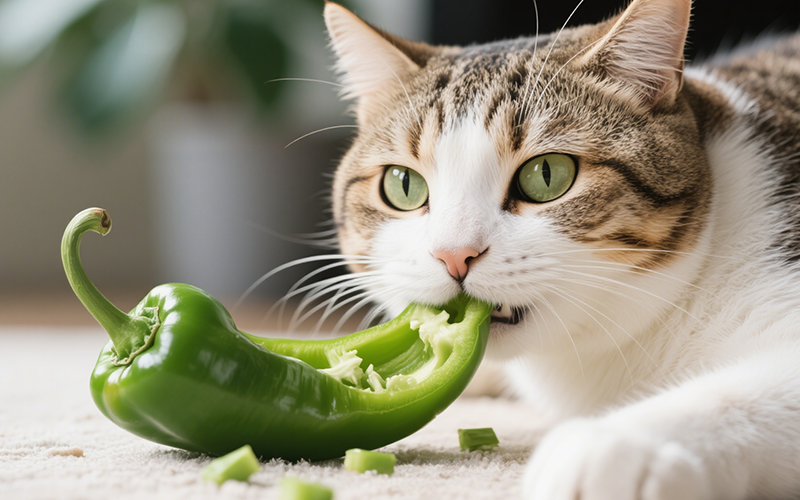
Crunchy Query: Can Cats Eat Green Peppers? A Vet-Reviewed Safety Analysis
- 16 Apr 2025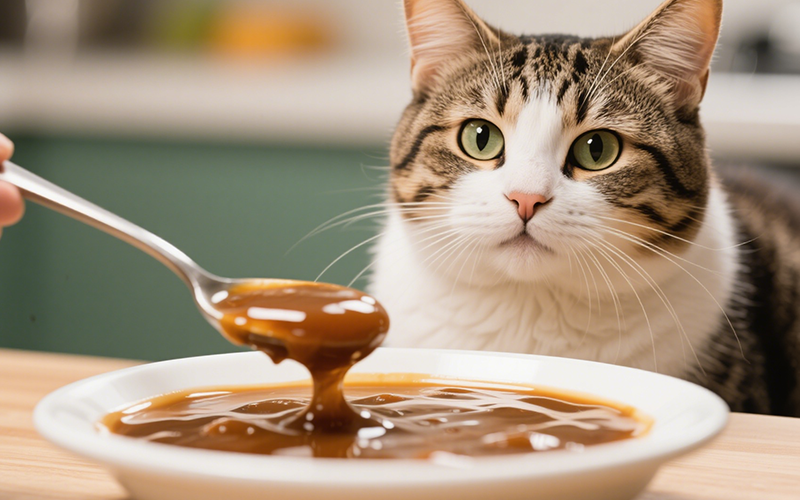
Gravy Danger Zone: Can Cats Eat Gravy Safely? (Vet-Reviewed Warning)
- 16 Apr 2025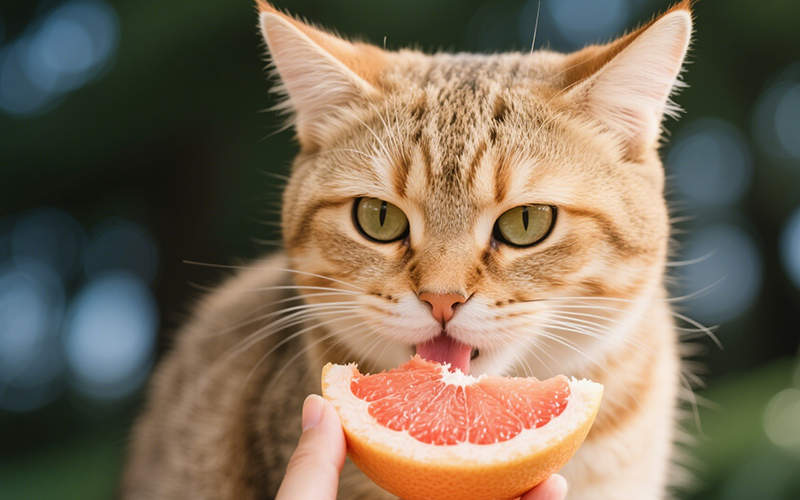
Toxic Temptation: Can Cats Eat Grapefruit? Vet Explains the Dangers
- 16 Apr 2025
